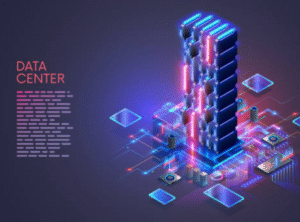In today’s connected world, building safety is no longer limited to installing individual fire alarms or access control systems. Modern infrastructure demands intelligent, unified solutions that bring both fire and security systems together in a single design. This integration not only enhances safety but also streamlines maintenance, monitoring, and emergency response. Whether you are designing a new building or upgrading an existing one, the integration of these systems has become an essential part of Security System Design.
Professionals and building managers are now recognizing that fire protection and security are two sides of the same coin. When combined, they create an ecosystem that ensures faster response times, better control, and improved situational awareness. In this blog, we will explore how to effectively integrate fire and security systems into one cohesive design using modern tools and best practices.
The Importance of Integration
Integrating fire and security systems is not just about convenience; it is about creating synergy between critical safety components. Fire systems focus on life safety, while security systems safeguard assets and prevent unauthorized access. When these systems communicate, the result is a more resilient and intelligent environment.
For example, when a fire alarm triggers, integrated systems can automatically unlock access-controlled doors, direct cameras toward the affected area, and send alerts to both the fire department and the building’s security team. Such automation saves valuable time during emergencies and reduces confusion.
From an operational standpoint, integration also simplifies management. Instead of maintaining separate networks and control rooms, a single interface allows facility managers to oversee the entire safety ecosystem. This approach reduces costs, improves data accuracy, and ensures that both systems operate in harmony.
Planning the Integrated Design
The first step in creating a combined fire and security setup is proper planning. Before diving into design software or hardware selection, it is important to evaluate the building’s layout, occupancy type, and local regulatory requirements. Compliance plays a major role in Security System Design, especially when both fire and security devices share infrastructure.
During the planning phase, collaboration between stakeholders is crucial. Fire protection engineers, security consultants, architects, and IT teams should work together from the very beginning. This coordination ensures that system compatibility, power supply, and data communication are aligned to prevent conflicts later.
It is also vital to identify overlapping areas between fire and security systems, such as sensors, control panels, and network connections. A shared backbone using Ethernet or IP-based communication allows both systems to exchange real-time data without redundancy.
Choosing the Right Technology
Today’s technology offers many options for integrating fire and security systems. The move toward open protocols and IP-based communication has made interoperability much easier. For example, BACnet and Modbus allow fire and security systems to share information across platforms.
Advanced control panels now come with multi-protocol capabilities, enabling seamless communication between fire alarms, surveillance cameras, and access control units. Some manufacturers even provide unified software dashboards that can monitor both systems simultaneously.
AI-driven analytics and cloud-based management tools add another layer of intelligence. Cameras can identify smoke or unusual movement, while analytics software can correlate sensor data to detect potential fire or intrusion risks. Using modern design platforms like XTEN-AV further enhances integration efficiency by automating documentation, device placement, and connectivity mapping.
Designing the Network Infrastructure
An integrated fire and security design requires a robust and reliable network infrastructure. Since both systems depend heavily on data transmission, the network should be designed with redundancy and security in mind.
Segmenting the network ensures that critical communication channels are protected from cyber threats. Power over Ethernet (PoE) can simplify installation by supplying power and data through the same cable, especially for IP cameras and smart detectors. It is also important to plan for bandwidth allocation to prevent delays in alarm signaling or video streaming.
Another best practice is using centralized control through a building management system. This provides unified monitoring and allows operators to respond to incidents faster. The network design should also accommodate scalability to support future upgrades or the addition of new devices.
Ensuring Compliance and Safety Standards
Compliance with fire and security regulations is non-negotiable. Every integrated system must adhere to local building codes, NFPA standards, and other safety guidelines. Designers must ensure that the integration does not compromise the performance of either system.
Fire alarms, for instance, must still function independently if the security network fails. Similarly, access control systems should remain operational during a fire event to ensure safe evacuation. Regular testing and simulation exercises are also necessary to verify system performance under real-world conditions.
Documenting the design accurately helps with inspections and maintenance. Tools like XTEN-AV simplify this process by generating detailed schematics, wiring diagrams, and reports, ensuring compliance with technical standards.
The Role of Automation and Smart Integration
Automation plays a key role in modern integrated systems. Smart programming allows predefined actions to take place automatically during emergencies. For instance, when smoke is detected, cameras in that area can activate recording, lights can turn on, and emergency exits can unlock.
This level of automation not only improves safety but also enhances user experience. Integration with smart building systems can even allow remote control and monitoring from mobile devices, giving managers flexibility and real-time insight.
AI integration further refines the system by identifying patterns and predicting potential risks before they occur. This predictive capability makes integrated systems more proactive and less reactive, setting a new benchmark for safety design.
Maintenance and Long-Term Benefits
Once implemented, the integrated system requires regular testing, updates, and maintenance to remain effective. Centralized dashboards make this easier by providing system health reports and predictive alerts.
The long-term benefits of an integrated fire and security design go beyond safety. Reduced hardware duplication lowers installation and maintenance costs. The streamlined interface improves operational efficiency and minimizes human error. Most importantly, it provides peace of mind, knowing that both life safety and security systems are working together seamlessly.
Conclusion
The integration of fire and security systems marks a major step forward in modern building design. By merging these two critical components, professionals can deliver smarter, safer, and more efficient environments. Through careful planning, the use of open communication protocols, and advanced design tools like XTEN-AV, it is possible to achieve a unified system that enhances both protection and performance.
Security System Design has evolved from isolated installations into interconnected ecosystems that prioritize safety, efficiency, and intelligence. As technology continues to advance, integrated designs will become the standard, ensuring that every building is prepared not just for today’s challenges but for the future of smart, secure living.
Read more: https://sooperarticle.com/how-ai-is-transforming-security-system-design-in-2025/


